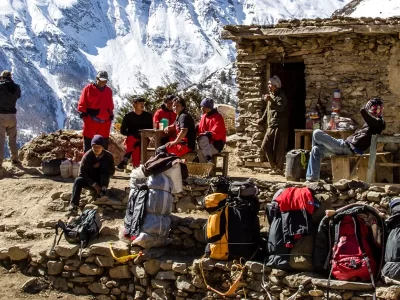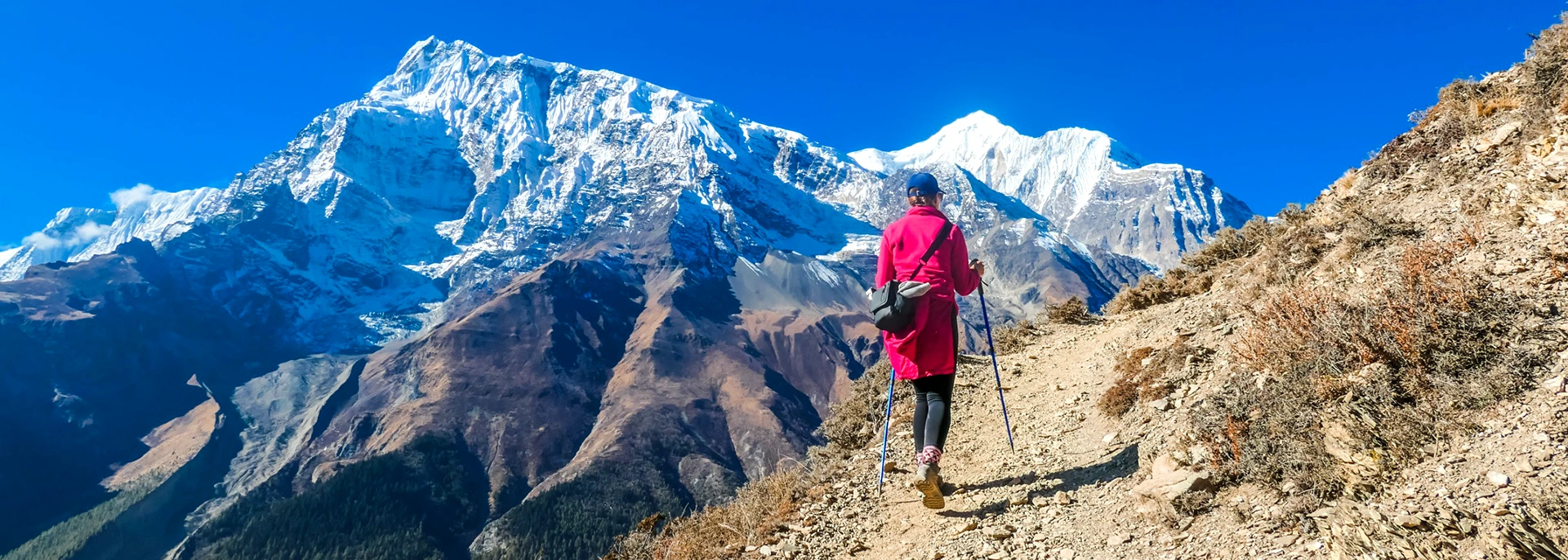Tipping Your Guides in Nepal
After a trek, how much should you tip your guide and porter? That depends on a number of variables, including your trip plans—solo or in a group, for a week or a month—and, most crucially, the quality of the service you received. Here is a quick guide to assist you.
How Tipping Works
In Nepal, there is no set amount to tip for guided excursions or treks. Nevertheless, leaving a tip is customary and a pleasant way to express gratitude if the service is deserving. After all, the porters and guides have transported you and your possessions through mountain passes and served as your only means of survival (and occasionally, source of fun) in isolated locations. The individuals who will make sure you have a special experience are also your guide and porters.
How Much to Tip?
Theoretically, you should only give the guides and porters what you feel they deserve if they have given you good service. In reality, most trekkers are unsure of how much to donate and are worried about doing so inadvertently. In the event that you are unsure of how much to tip, we have included some fair guidelines below.
| Service | USD per day | Rupees per day |
| Trekking Guide | $10 to $15 USD | 1000-1500 NPR |
| Porter | $5 to $10 USD | 500-1000 NPR |
| Tour Guide | $10 to $15 USD | 1000-1500 NPR |
| Driver | $5 to $10 USD | 500-1000 NPR |
Note that these amounts only apply to the collective giving of your group, not to individual contributions.
The aforementioned statistics are based on the supposition that you are trekking with a respectable organization that pays its workers and porters good, living wages and offers insurance to them. Otherwise, the porter and guide could need to rely on your gratuities to survive. If you hired a porter or guide for less than the going rate for a day, or if your hike was extremely inexpensive, you should tip more. Feel free to give more if the service is exceptional. Give less if not.
The distance of your walk will also affect how much you tip. Follow the aforementioned advice if you’re only traveling for a few days; if you’re organizing a month-long excursion, $200–$250 USD should be enough. In addition, if you’re traveling alone, you could tend to the lower end of the spectrum.
Last but not least, it’s important to remember that not all guides are paid equally. One can earn up to $50-$100 USD per day for those who are fluent in a particular language, have extensive expertise, are globally certified in wilderness survival, etc. In those circumstances, you might want to offer a bit more—around 15% of their annual pay for the time that you are trekking.
Preferred currency
Either US dollars or Nepali Rupees (NPR) may be used as gratuities. When you are in Pokhara or Kathmandu, take out rupees from the ATM. It’s possible that ATMs in Nepal can be picky, and you might need to try a few before finding one that works. Alternately, you could go to a bank to exchange cash or traveler’s checks.
When to Offer a Tipping
On the final night of the walk, after supper, tips are typically offered. Each trekker can contribute a little more to their personal porter and/or guide, especially if a unique connection was made, if you’re trekking in a group. You should all chip in money to offer to the entire team.
When In Doubt
Although these recommendations are a wonderful place to start, you shouldn’t feel obligated to follow them. Feel free to switch it up, for instance, if you get along better with your porter than your guide or if your porter is the one who carries your kit bag and helps you over rocks. Your guide and porter deserve to be appreciated for their hard work, excellent service, and contribution to your personal trek experience.
Ask your travel advisor any further questions you may have prior to your trip. At the end of the day, you’ll want to make sure you have enough money for a well-earned beer in addition to tips.
Recent Blog Posts

- September 23, 2023

- September 22, 2023

- September 22, 2023

